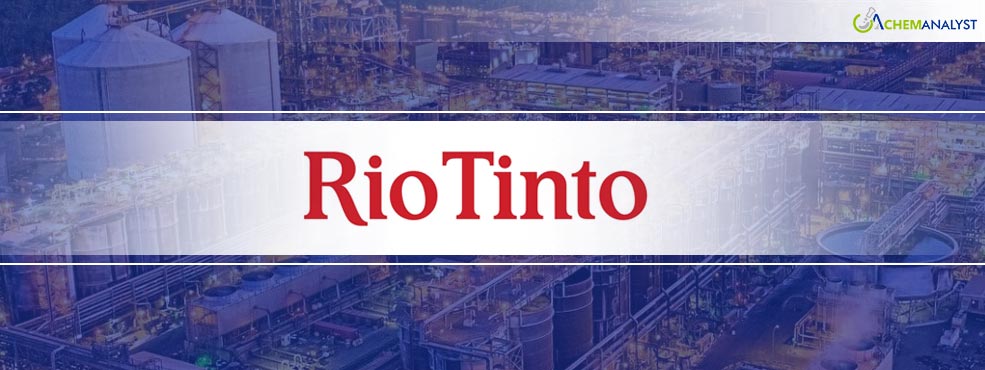Rio Tinto's Copper Strategy Pays Off, Signaling Opportunities for Chemical Sector
- 21-Feb-2025 7:45 PM
- Journalist: Emilia Jackson
Rio Tinto's recent financial results offer valuable insights for the chemical industry, demonstrating the increasing importance of base metals, particularly copper, in a rapidly evolving global market. The mining giant reported a 15% surge in net profit for 2024, reaching US$11.6 billion, despite headwinds in its iron ore business. This robust performance underscores the company's strategic focus on copper, a critical material for the chemical sector and its downstream applications.
While Rio Tinto experienced a slight dip in overall revenue to US$53.7 billion due to softened iron ore prices, its copper division emerged as a key driver of profitability. The ongoing property crisis in China impacted iron ore demand, highlighting the risks associated with commodity price volatility. However, the company's diversified portfolio, anchored by copper, proved resilient. This resilience is particularly relevant for the chemical industry, which relies on a stable supply of raw materials.
The surge in copper demand, driven by global electrification trends and the rise of green technologies, has significantly benefited Rio Tinto.4 Average copper prices on the London Metal Exchange rose by 8% in 2024, reflecting the metal's increasing value in various industrial applications. This price trend is crucial for chemical companies, as copper is essential for electrical wiring, electronics manufacturing, and increasingly, in the production of electric vehicles and renewable energy systems.
Rio Tinto's strategic foresight in focusing on copper is particularly noteworthy. The company is actively expanding its copper production capacity, notably at the Oyu Tolgoi mine in Mongolia. This expansion positions Rio Tinto to capitalize on the anticipated long-term growth in copper demand, driven by the global transition to a low-carbon economy. The availability and pricing of copper will have a direct impact on the chemical industry, influencing the cost of production for various downstream products.
For the chemical sector, Rio Tinto's performance offers several key takeaways. Firstly, it underscores the growing interconnectedness of the mining and chemical industries. The availability and pricing of base metals like copper directly impact the chemical sector's ability to produce essential materials and technologies. Secondly, it highlights the increasing importance of sustainable sourcing and responsible mining practices. As demand for copper rises, chemical companies will need to ensure that their supply chains are aligned with environmental and social responsibility standards.
Furthermore, Rio Tinto's success demonstrates the potential for innovation and value creation in the base metals sector. The chemical industry can learn from Rio Tinto's strategic approach to diversification and its focus on capitalizing on emerging market trends. By investing in research and development, chemical companies can develop new applications for copper and other base metals, creating value-added products for a range of industries.
Finally, Rio Tinto's performance serves as a bellwether for the broader commodities market. The company's success in navigating the challenges of volatile commodity prices offers valuable lessons for the chemical industry, which is also subject to fluctuations in raw material costs. By closely monitoring market trends and adopting proactive strategies, chemical companies can mitigate risks and ensure long-term profitability.7 Rio Tinto's focus on copper is not just a story about a mining company; it's a signal to the chemical sector about the evolving landscape of materials and the opportunities that lie ahead.



